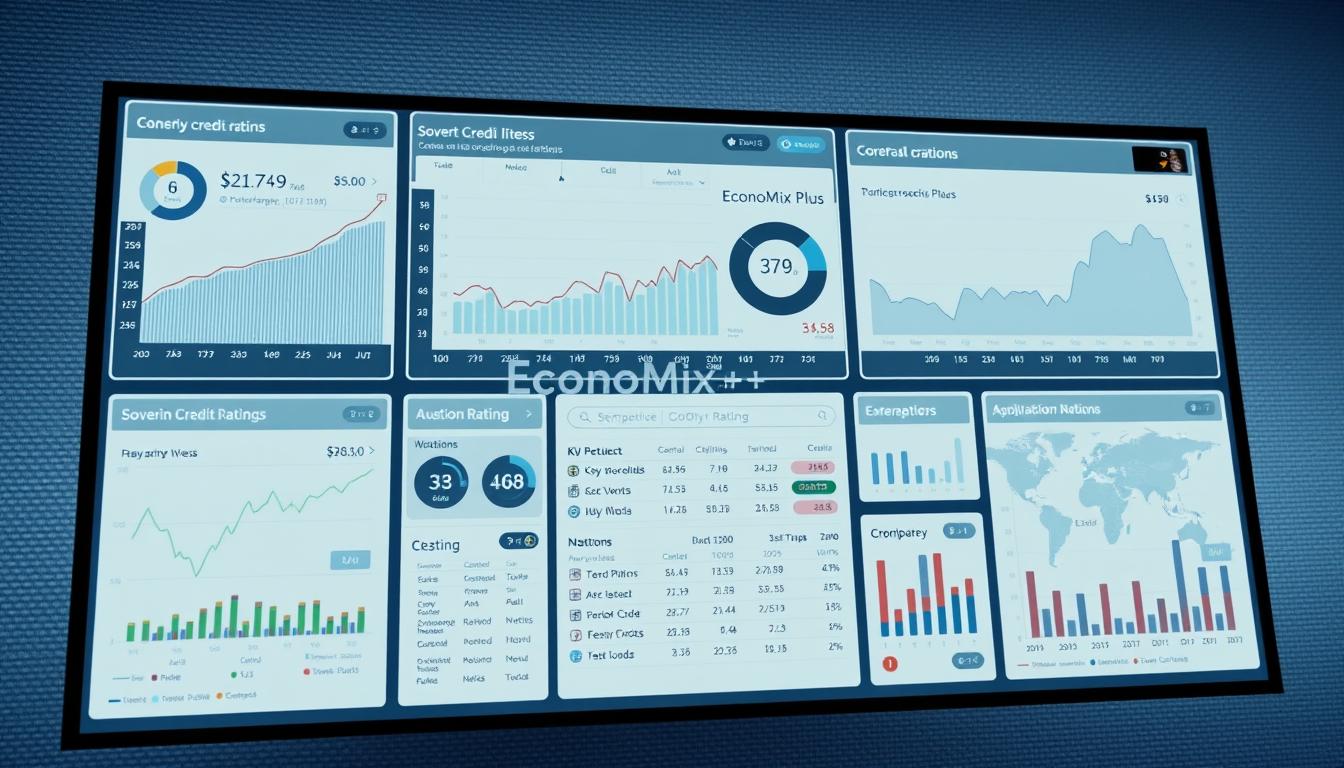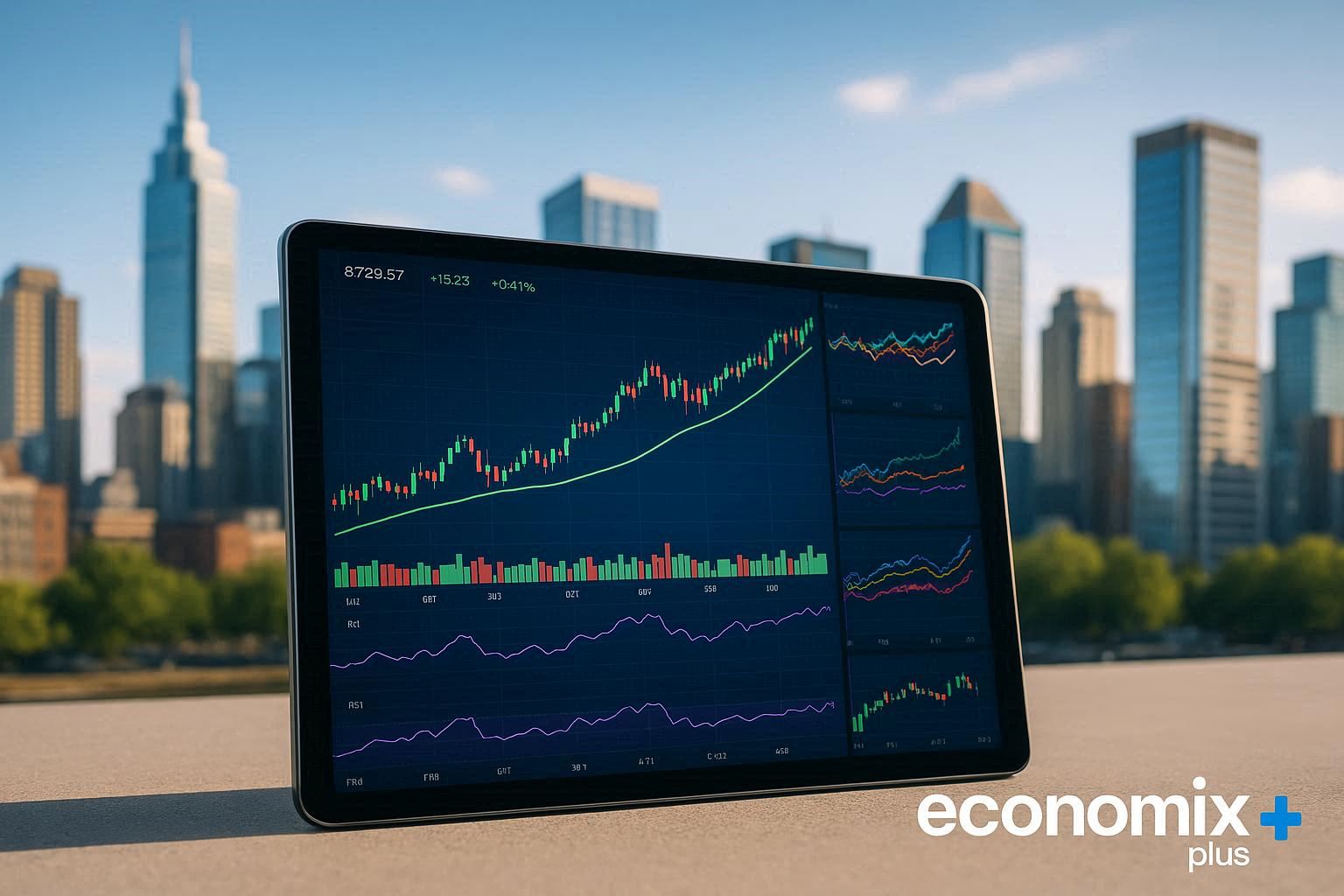Can a single letter grade shape global perceptions of an entire nation’s stability? This question lies at the heart of understanding how sovereign credit ratings influence economic opportunities. Major institutions like Moody’s, Fitch, and Standard & Poor’s analyze everything from GDP trends to political risks to assign these critical scores. Their evaluations don’t just signal risk levels—they directly impact borrowing costs and international partnerships.
These ratings serve as financial report cards, reflecting a government’s capacity to meet obligations. Countries with higher grades typically secure better terms when raising capital through global markets. Historical events, like Argentina’s 2001 default or Greece’s debt crisis, demonstrate how downgrades can trigger economic turbulence. Agencies combine quantitative data (like inflation rates) with qualitative assessments of governance quality to form their conclusions.
For policymakers, maintaining strong ratings enables access to affordable funding for infrastructure and social programs. Investors rely on these assessments when making foreign investment decisions, using them to compare opportunities across borders. While the system isn’t perfect—critics cite delayed reactions during crises—it remains the dominant framework for evaluating national economic health.
Key Takeaways
- Credit ratings assess a country’s ability to repay debts through economic and political analysis
- Top agencies use scales from AAA to D, with lower grades increasing borrowing costs
- Historical defaults show the real-world consequences of rating downgrades
- Ratings influence global investment flows and development funding access
- Both numerical data and governance quality shape final assessments
Introduction to Sovereign Credit Ratings
National economies are graded on their financial trustworthiness using a global benchmark. This system shapes how governments access capital and manage international relationships.
Defining Sovereign Credit and Its Importance
Sovereign credit represents a government’s ability to repay loans. It combines economic performance, debt management, and political conditions into one metric. Strong scores attract foreign investment, while weak grades raise borrowing costs.

Financial institutions use these evaluations to set lending terms. For example, countries with stable growth and low inflation often secure better trade agreements. This grading impacts everything from currency values to employment rates.
Overview of the Global Credit Rating Landscape
Three agencies dominate 90% of the market:
| Agency | Rating Scale | Market Share |
|---|---|---|
| Moody’s | Aaa to C | 35% |
| Standard & Poor’s | AAA to D | 40% |
| Fitch | AAA to D | 25% |
Their analyses consider diverse factors like trade balances and leadership stability. Emerging markets face tougher scrutiny due to volatile currencies. Meanwhile, developed nations benefit from established track records.
These ratings create a common language for investors worldwide. They help compare opportunities between countries with different economic systems. However, critics argue the process favors wealthier nations.
Understanding the Mechanics of Sovereign Credit Ratings
Global financial assessments rely on a dual-lens approach combining hard data with expert analysis. Institutions like Moody’s and Fitch employ rigorous frameworks to evaluate economic stability, blending numerical benchmarks with real-world governance insights.

Qualitative and Quantitative Assessment Methods
Rating agencies analyze debt obligations through two distinct filters. Quantitative metrics track GDP growth, inflation trends, and fiscal reserves—measurable indicators of repayment capacity. Qualitative reviews assess political stability, policy effectiveness, and institutional transparency.
This hybrid approach emerged after the 1930s banking crises. A Fitch analyst noted: “Numbers reveal patterns, but context determines outcomes.” Modern models weigh economic data (60-70%) against governance factors (30-40%) when scoring credit risk.
Historical Context and Evolution
Evaluation methods transformed after landmark events:
- Great Depression (1930s): Introduced formal default tracking
- Latin American debt crisis (1980s): Highlighted currency volatility risks
- Eurozone crisis (2010s): Prioritized banking sector health
Rating agencies now use AI to process real-time trade flows and social unrest indicators. However, core principles remain—assessing whether governments can honor debt obligations without compromising growth. Recent updates emphasize climate resilience, reflecting shifting global priorities.
Why is sovereign credit rating a key measure of a nation’s financial strength

Global markets rely on standardized assessments to gauge economic health. Agencies like Standard & Poor’s translate complex fiscal data into actionable insights. Their evaluations determine how easily governments can issue international bonds at favorable rates.
Countries with strong ratings attract institutional investors seeking stable returns. For example, nations rated AA- or higher by Standard & Poor’s typically secure 1.5% lower interest on 10-year bonds. This advantage directly funds infrastructure projects and social initiatives without straining budgets.
Sustained GDP growth patterns reinforce positive assessments. Markets interpret consistent 3-5% annual expansion as evidence of resilient economies. Chile’s upgrade to A+ in 2021 followed six consecutive years of above-average growth despite copper price volatility.
Three critical factors shape these evaluations:
- Debt-to-GDP ratios below 60%
- Foreign currency reserves covering 6+ months of imports
- Transparent fiscal policy frameworks
While international bonds provide essential capital, ratings also influence trade credit terms. Suppliers extend better payment conditions to countries with stable outlooks from Standard & Poor’s. This creates a compounding effect on economic opportunities.
Recent data shows a 0.8 correlation between sovereign upgrades and increased GDP growth within two years. However, agencies remain cautious—only 12% of nations improved their standing in 2023. As one analyst noted: “Ratings reflect capacity, not potential.”
The Role of Credit Rating Agencies in Global Markets
Three corporations wield unparalleled influence over trillions in global capital flows. Moody’s, Fitch, and Standard & Poor’s collectively assess 90% of sovereign entities worldwide, their judgments rippling through bond yields and investment strategies.
Gatekeepers of Capital Access
Each agency brings unique methodologies to evaluating country sovereign risk. Moody’s emphasizes debt sustainability metrics, while Standard & Poor’s prioritizes institutional effectiveness. Fitch balances economic growth projections with political risk assessments.
Key differences emerge in their analytical frameworks:
- Moody’s: 5-year economic forecasts weighted at 40%
- Standard & Poor’s: Governance scores determining 35% of ratings
- Fitch: Real-time trade balance monitoring systems
A 2023 IMF study revealed that 78% of institutional investors adjust portfolios within 48 hours of sovereign rating changes. This responsiveness underscores why financial markets treat these evaluations as economic weathervanes.
“Our models map how policy shifts today could impact debt servicing capacity in 2030,” explains a Fitch sovereign risk director.
For sovereign entities, maintaining favorable grades requires balancing growth initiatives with fiscal discipline. Countries like Mexico and Indonesia have established dedicated teams to communicate economic strategies directly to rating analysts.
These assessments carry particular weight in emerging markets. A single downgrade can increase borrowing costs by 150 basis points, equivalent to $420 million annually for a mid-sized country sovereign issuing $28 billion in bonds.
This analysis strictly examines credit risk mechanisms without endorsing specific financial strategies. The interplay between agency evaluations and financial markets remains foundational to modern global economics.
Key Determinants of Sovereign Credit Ratings
Economic vitality and governance effectiveness form the bedrock of national financial evaluations. Rating institutions analyze 78 distinct indicators across five categories to assess repayment capacity. These metrics create a blueprint for understanding how countries access capital in global bond markets.
Economic Performance Benchmarks
Three core metrics dominate fiscal assessments:
| Indicator | High-Rated Countries | Medium-Rated Countries |
|---|---|---|
| GDP Growth | 3.1% Average | 1.8% Average |
| Per Capita Income | $38,400 | $12,700 |
| Fiscal Balance | +0.4% Surplus | -4.2% Deficit |
Fitch Ratings weights these economic fundamentals at 55% in their evaluation models. Nations maintaining consistent growth above 2.5% typically secure better terms when issuing debt instruments. Currency stability and export diversity further reinforce positive assessments.
Governance Quality Metrics
Political decision-making processes account for 30% of scoring frameworks. Agencies monitor policy continuity, corruption controls, and crisis response effectiveness. A 2023 Fitch Ratings report noted: “Leadership transitions without legislative gridlock correlate strongly with rating stability.”
Countries experiencing frequent government changes face heightened scrutiny in bond markets. The impact sovereign evaluations have on foreign investment becomes particularly evident during electoral cycles. Transparent fiscal frameworks and independent central banks help mitigate these risks.
Emerging economies improving judicial efficiency and contract enforcement often see upgrades within 18-24 months. However, external shocks like trade disputes can negate these gains. Analysts emphasize that sustained reforms create lasting impact sovereign credit profiles more effectively than short-term fixes.
Impact of Economic Stability on a Country’s Creditworthiness
Economic turbulence leaves lasting marks on national balance sheets. Rating agencies track three core stability indicators: inflation trajectories, foreign debt levels, and fiscal discipline. When these metrics spiral, even resource-rich nations face downgrades that ripple through their financial system.
Interplay Between Inflation, External Debt, and Fiscal Balance
Persistent inflation above 6% often triggers rating reviews. Turkey’s 2023 downgrade followed 24 months of double-digit price hikes, despite strong export growth. Analysts noted: “Price stability forms the bedrock of high credit assessments—once eroded, recovery takes years.”
External debt ratios reveal repayment capacity limits. Zambia’s 2020 default occurred when obligations reached 120% of GDP, overwhelming tax revenues. Countries maintaining debt below 60% of GDP typically retain market confidence, even during global downturns.
| Stability Factor | Safe Threshold | Risk Threshold |
|---|---|---|
| Inflation Rate | 2-4% | 8%+ |
| External Debt/GDP | <60% | >100% |
| Fiscal Deficit | <3% | >5% |
Fiscal gaps exceeding 5% of GDP signal structural weaknesses. Argentina’s chronic deficits since 2012 have prevented high credit reinstatement despite multiple IMF programs. A particular country’s ability to balance budgets often predicts rating trajectory more accurately than short-term growth spurts.
These dynamics create feedback loops within the financial system. Brazil’s 2016 credit improvement followed pension reforms that reduced long-term liabilities. However, no particular country can ignore external shocks—the 2022 energy crisis caused seven European nations to revise deficit projections upward simultaneously.
“Stability requires aligning monetary policy with debt management strategies,” notes a Standard & Poor’s emerging markets specialist.
This analysis examines economic mechanisms without endorsing specific securities. Investors should consult licensed advisors before engaging with bond markets.
Assessing Sovereign Credit Risk and Debt Obligations
What separates nations that honor their debts from those that spiral into economic turmoil? Sovereign credit risk measures the likelihood of governments failing to meet obligations, directly impacting their access to global capital. This evaluation combines repayment history with forward-looking debt sustainability metrics.
Decoding Default Patterns and Fiscal Stress
Historical defaults leave lasting scars on national finances. Argentina’s 2001 collapse erased $82 billion from bondholders, while Lebanon’s 2020 crisis froze $30 billion in bank deposits. Rating agencies track these events through debt service ratios—the percentage of revenue spent on interest payments.
| Risk Factor | High-Risk Threshold | Stable Threshold |
|---|---|---|
| Debt-to-Revenue Ratio | >400% | <200% |
| Foreign Reserves Coverage | <3 Months Imports | >6 Months Imports |
| Political Stability Index | <25/100 | >50/100 |
Countries exceeding two thresholds face higher risk classifications. Sri Lanka’s 2022 default occurred when foreign reserves covered just 1.2 months of imports. Analysts at Moody’s note: “Past defaults create skepticism—markets demand premium returns for perceived vulnerabilities.”
Modern assessments evaluate three critical areas:
- Debt restructuring frequency
- Currency mismatch in obligations
- Contingent liabilities from state-owned enterprises
Accurate risk profiling prevents credit market freezes during crises. Ecuador’s 2024 upgrade followed proven fiscal adjustments—reducing debt costs by 2.1%. However, nations with volatile policies struggle to regain investor trust, even after resolving defaults.
Implications for International Investors and Financial Markets
Global capital flows pivot on assessments of economic trustworthiness. Institutional investors allocate funds based on sovereign evaluations, treating them as vital risk indicators. A single-tier downgrade can shift billions in portfolio investments between markets.
Influence on Foreign Direct Investment and Market Confidence
Rating tiers directly correlate with capital inflows. Nations graded BBB+ or higher attract 73% of emerging market investments, according to 2023 World Bank data. This preference stems from reduced perceived risk and predictable returns.
Three factors drive investment decisions:
- Consistency in fiscal policy implementation
- Transparency in debt management practices
- Currency convertibility assurances
| Rating Tier | Average FDI Growth | Equity Premium |
|---|---|---|
| AAA to AA- | 5.8% | 2.1% |
| A+ to BBB- | 3.4% | 4.7% |
| BB+ and Below | 1.2% | 9.3% |
Market confidence surges when governments demonstrate reform commitments. Vietnam’s 2022 upgrade to BB+ sparked a 14% increase in manufacturing investments. As one fund manager noted: “Stable ratings signal reduced operational risk, letting us focus on long-term growth.”
Policymakers face pressure to maintain evaluation benchmarks through crisis management frameworks. Countries combining strong institutions with diversified economies typically sustain investor interest through economic cycles. This dynamic creates self-reinforcing cycles of capital access and development.
Historical Perspectives on Sovereign Defaults and Crises
Economic history reveals patterns that shape modern financial safeguards. Major rating shifts often follow systemic collapses, forcing reforms in how agencies evaluate national stability. The Great Depression triggered 32 sovereign defaults between 1931-1938, establishing precedents for modern risk analysis.
Recent crises demonstrate lasting impacts on ratings. Greece’s 2009 debt revelation caused a four-tier downgrade within 18 months. Iceland’s 2008 banking collapse erased its A+ status, requiring seven years to regain investment-grade standing.
| Event | Peak Default Rate | Average Recovery Time |
|---|---|---|
| Great Depression (1930s) | 47% of global GDP | 15 years |
| Latin American Crisis (1980s) | $327 billion defaults | 9 years |
| Eurozone Crisis (2010s) | 6 nations downgraded | 5 years |
Rating agencies now employ crisis-era data to refine evaluation models. After Argentina’s 2001 default, Fitch introduced contingent liability assessments for state-owned enterprises. These changes improved predictive accuracy during Ukraine’s 2014 debt restructuring.
Post-crisis re-evaluations prioritize fiscal transparency. A Moody’s analyst noted: “Modern ratings incorporate lessons from historical payment failures—governments can’t hide liabilities indefinitely.” This shift explains why 78% of upgraded countries since 2010 maintained stable debt trajectories.
Investor confidence remains tethered to these historical benchmarks. Countries with multiple defaults face 3.2% higher borrowing costs than peers with clean records. Government responses to past crises now directly influence access to emergency funding mechanisms.
Risks and Challenges in Evaluating Sovereign Credit Ratings
Evaluating national debt stability involves navigating hidden financial icebergs. Analysts must distinguish between temporary cash shortages and structural insolvency while accounting for geopolitical shocks. These factors create complex puzzles for accurate risk assessment.
Challenges with Illiquidity and Insolvency
Liquidity constraints occur when governments face short-term payment difficulties despite solid fundamentals. Argentina’s 2020 debt restructuring showcased this—foreign reserves covered just 2.1 months of imports despite $323 billion GDP. True insolvency emerges when liabilities exceed assets long-term, as seen in Lebanon’s 154% debt-to-GDP ratio before default.
| Factor | Illiquidity | Insolvency |
|---|---|---|
| Duration | Temporary (6-18 months) | Permanent |
| Solution | Bridge financing | Debt restructuring |
| Investor Impact | Short-term volatility | Portfolio rebalancing |
Rating models struggle with overlapping indicators. Zambia’s 2022 default combined both issues—copper price drops caused cash shortages while $17 billion obligations overwhelmed fiscal capacity.
The Role of Unpredictable Political Events
Sudden leadership changes or sanctions can upend economic forecasts. When Sri Lanka banned chemical fertilizers in 2021, agricultural exports plummeted 22%, accelerating its default. A Fitch analyst notes: “Political decisions often override economic models—we now track 14 instability indicators weekly.”
Investors face amplified risks during regime transitions. Myanmar’s 2021 coup triggered capital flight equal to 9% of GDP. Markets penalize uncertainty—countries experiencing frequent leadership changes pay 1.8% higher bond yields on average.
These evaluation challenges demand adaptive frameworks. Modern systems now monitor social media sentiment and legislative gridlock indexes alongside traditional metrics. However, no model fully captures the human element driving fiscal decisions.
Evolving Trends and Future Outlook for Sovereign Credit
Artificial intelligence now processes economic patterns faster than human analysts. Rating agencies increasingly deploy machine learning to predict fiscal risks, analyzing real-time data from 127 unconventional sources. These tools track social unrest through satellite imagery and assess trade flows via blockchain transactions.
Impact of Emerging Technologies and AI
Modern evaluation systems cross-reference traditional debts metrics with behavioral economics. A 2024 Moody’s study revealed AI models detected 83% of payment default risks 14 months earlier than conventional methods. This shift allows proactive adjustments to bond issuance strategies before markets react.
| Traditional Analysis | Tech-Enhanced Approach | Accuracy Improvement |
|---|---|---|
| Quarterly GDP Reports | Real-Time Spending Trackers | +39% Forecast Precision |
| Manual Political Risk Scores | Social Media Sentiment AI | +52% Crisis Prediction |
| Historical Debt Ratios | Blockchain Liability Tracking | +67% Transparency |
Emerging factors like climate resilience algorithms now influence ratings. Fitch’s new platform evaluates how rising sea levels could impact coastal nations’ repayment capacity by 2035. Meanwhile, Standard & Poor’s tests quantum computing to simulate 18 million economic scenarios simultaneously.
“Predictive analytics transform sovereign risk assessment from reactive to anticipatory,” states a Moody’s emerging tech report.
Indonesia’s 2023 AI-powered debts management system reduced borrowing costs by 1.2%. Such innovations suggest future ratings might incorporate dynamic scores updated hourly. However, ethical concerns persist about algorithmic bias in assessing developing economies.
Global Regulatory Framework and Its Influence
Global financial regulations act as invisible architects shaping economic landscapes. Institutions like the Basel Committee and IMF establish guardrails that govern how nations manage obligations and attract capital. These frameworks create standardized benchmarks for assessing fiscal health across borders.
Basel III and IMF Guidelines
Basel III reshaped risk management after the 2008 crisis by tightening bank capital requirements. Its liquidity coverage ratio forces lenders to maintain reserves against sovereign debt holdings—directly influencing how market participants view government bonds. Banks now treat BBB-rated sovereign debt as 50% riskier than pre-reform assessments.
The IMF’s Debt Sustainability Framework provides templates for evaluating repayment capacity. Its 2023 update introduced climate-adjusted growth projections, affecting credit evaluations for coastal nations. Countries using IMF fiscal transparency tools see 23% faster rating recoveries post-crisis.
| Regulation | Key Requirement | Impact on Ratings |
|---|---|---|
| Basel III | 4.5% Tier 1 capital ratio | +1.2 grade boost for compliant nations |
| IMF SDRM | Debt restructuring timelines | 35% faster crisis resolution |
| G20 Guidelines | Debt/GDP disclosure standards | 17% lower yield spreads |
These measures stabilize market confidence during volatility. When Ecuador adopted Basel III banking reforms in 2022, its dollar bond yields fell 180 basis points within six months. The IMF’s surveillance reports now influence 68% of sovereign credit committee decisions globally.
Balancing regulatory obligations with economic expansion remains challenging. Vietnam’s 2023 infrastructure surge required temporary waivers from Basel liquidity rules—a move that preserved its BB+ rating while enabling 6.2% growth. As one central banker noted: “Compliance fuels credibility, but flexibility drives progress.”
Conclusion
Global economic trust hinges on multifaceted evaluations of fiscal resilience. A country’s creditworthiness reflects its ability to balance growth with stability—a metric shaped by inflation controls, currency management, and debt history. Markets scrutinize these factors through rating agencies’ lenses, where consistent GDP expansion and political predictability often secure favorable terms.
Three pillars uphold modern assessments: economic performance (40%), governance quality (35%), and regulatory compliance (25%). Nations maintaining stability across these areas typically access funds at lower interest rates. However, unexpected shocks—from commodity crashes to leadership shifts—can swiftly alter risk perceptions.
Emerging technologies now refine how analysts forecast fiscal health. AI-driven models process real-time trade data and social trends, complementing traditional bond market evaluations. These tools help predict currency fluctuations and inflation trajectories with greater precision.
As global markets evolve, sovereign evaluations remain critical for attracting investments and managing obligations. The interplay between historical benchmarks and forward-looking analytics will continue shaping how nations navigate financial challenges and opportunities.














